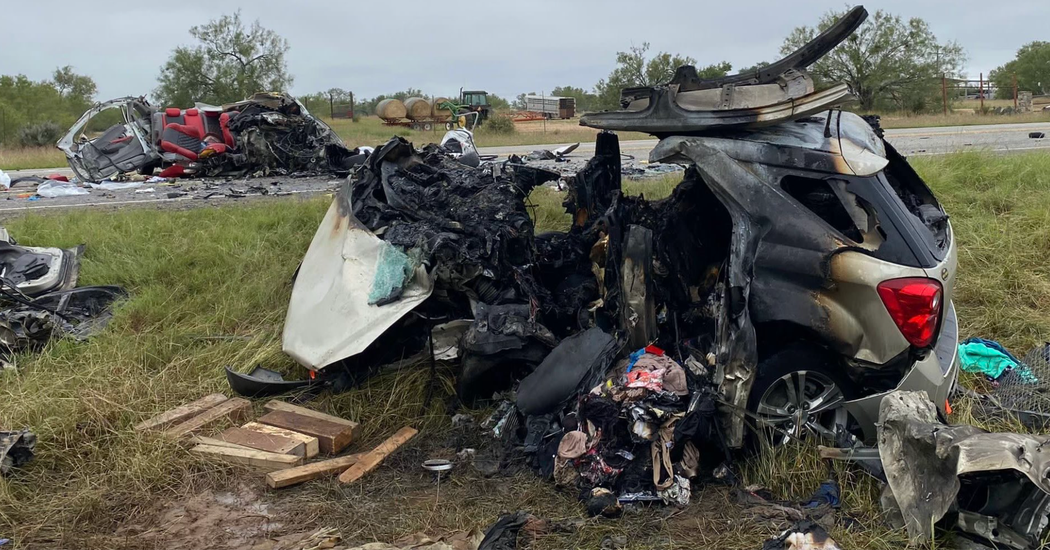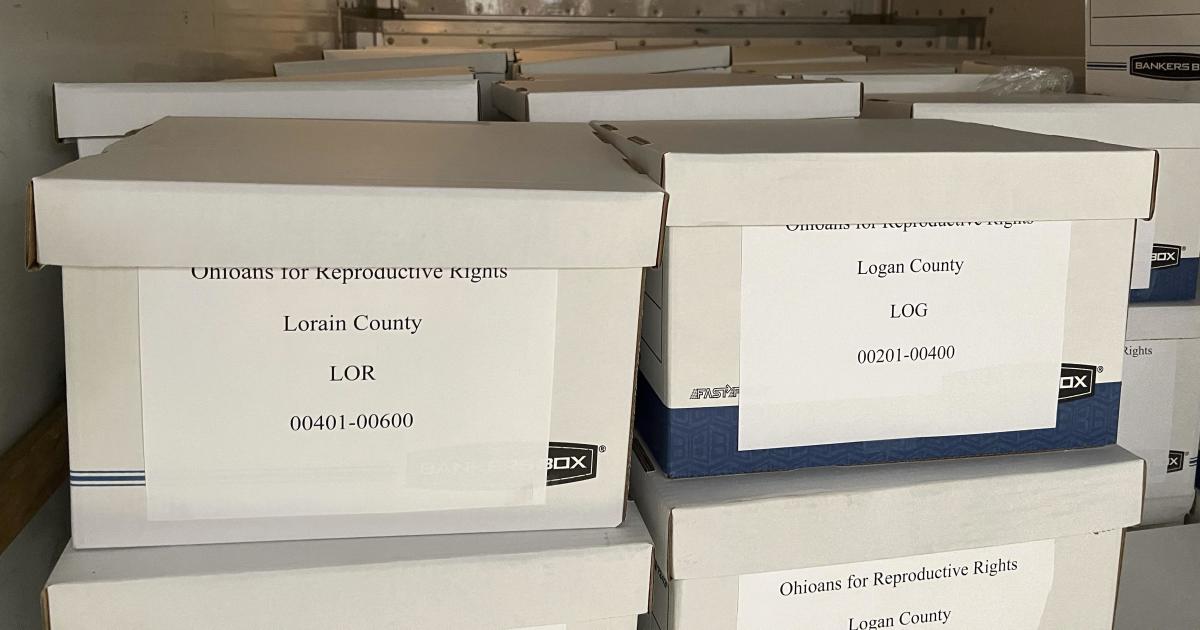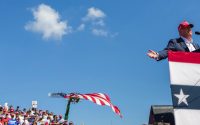Dick Rutan, Who Flew Around the World Without Refueling, Dies at 85
Dick Rutan, who in 1986 commanded the first aircraft to make a nonstop flight around the world without refueling — an aviation milestone whose ingenuity and daring recalled the heroic do-it-yourself era of early flight — died on Friday in a hospital in Coeur d’Alene, Idaho. He was 85.
His brother, Burt, who designed the ultralightweight plane that was flown in that nine-day voyage, said that Mr. Rutan had suffered from long Covid, which in recent weeks required 24-hour assisted breathing, and that he had decided to have his oxygen turned off after enduring a night of great pain.
“Before he made the decision to end it,” Burt Rutan said, “he was talkative.”
In the spirit of technology created by other California tinkerers, the design of the Rutan craft, the Voyager, was first sketched by Burt Rutan on a napkin at a Chinese restaurant in the desert town of Mojave in 1981.
The advent of a new material, composites of carbon fiber, made it possible for the first time to imagine an airplane light enough for a round-the-world flight on a single tank of gas, Burt Rutan told his brother and his brother’s companion at the time, Jeana Yeager.
The plane they built in a hangar in the desert was propeller-driven and resembled a child’s balsa wood glider, but with wings longer than those of a Boeing 727. It was essentially a collection of 17 fuel tanks in a sheath of carbon fiber cloth, epoxy and paper — a skin so fragile that it could be damaged by an elbow poke. Voyager was so heavy with fuel on takeoff that it took nearly three miles of runway to ascend from Edwards Air Force Base in Southern California on Dec. 14, 1986.
Mr. Rutan had flown combat missions for the Air Force in the Vietnam War. But, he said in a memoir he wrote with Ms. Yeager, his co-pilot on the flight, the home-built aircraft with its flexible wings was one plane that truly frightened him.
“I had never gotten used to the flailing wings,” he wrote in the joint memoir, “Voyager” (1987). “I would tell myself that the structures could take that motion, but I wasn’t ever really convinced. It was a gnawing, grinding fear, and it never went away.”
Adding to his anxiety was that his relationship with Ms. Yeager had run its course before the flight began — and that, in his view, she had not prepared enough to be his co-pilot.
“Tensions were developing between us long before we got off the ground,” Ms. Yeager wrote in their memoir. “I would have left if I could, but I had made a commitment.”
Putt-putting at low altitudes, taking catnaps to steal sleep, nearly slamming into a mountain in Africa and almost ditching in the Pacific Ocean, the Voyager and its crew limped home on fumes from empty fuel tanks two days before Christmas.
“The significance of their voyage can be compared to Charles Lindbergh’s 1927 Atlantic crossing,” Michael Collins, a former test pilot and astronaut, wrote in The New York Times in 1987. “Although Voyager was much more of a team effort than Lindbergh’s solo, success in each case resulted from the same combination of vision, luck, skill and guts.”
Stuart Witt, a former chief executive of the Mojave Air & Space Port, a hub for private spaceflight, said in an interview that the Voyager had demonstrated the potential of composites of carbon fibers and other high-tech materials in airplane frames, which were traditionally made of aluminum and steel. The Rutan brothers “disrupted an entire industry,” he said.
“They brought composite structures into the industry. Now look at what a 787 is made of, what an Airbus 350 is made of,” he added, referring to wide-body aircraft made by Boeing and Airbus.
Burt Rutan, an aeronautical engineer, said that other test pilots who flew the craft in trial runs cut their flying time short; the turbulence the plane experienced wore them out. “They’d end up coming back exhausted,” he said. “None of my other pilots would have been able to do it.”
He also said that Ms. Yeager had never learned to fly the plane alone, relying on autopilot while his brother caught up on sleep.
Ms. Yeager, who is not related to the famous test pilot Chuck Yeager, disputed the notion that she had a secondary role flying Voyager. “Actually, we were both co-pilots,” she said in an interview.
Speaking last year on the YouTube channel SocialFlight, Dick Rutan said that after the Voyager landed, Ms. Yeager “got out of the airplane and went back to Texas, and I’ve never heard from her again.”
He was, he added, speaking metaphorically; the pair later collaborated on their book, and on speaking tours.
“Some very special people came together in this project, and I remember them fondly,” Ms. Yeager added. “I’m sorry that we’re not all together again.”
On Voyager’s final night aloft, Burt Rutan flew up in a chase plane to greet his brother. “The totality of the thing finally hit all of us,” Dick Rutan recalled last year. “We’re literally crying, tears coming down our face. You couldn’t even speak, you were crying so hard.” Thousands of people came out to welcome Voyager home.
The plane is in the Smithsonian’s National Air and Space Museum, along with Lindbergh’s Spirt of St. Louis and the Wright brothers’ Flyer.
Richard Glenn Rutan was born on July 1, 1938, in Loma Linda, Calif., the eldest of the three children of Irene (Goforth) Rutan and George Rutan. His father was a farmer who enlisted in the Navy and after World War II, with the help of the G.I. Bill, became a dentist.
His first marriage ended in divorce. In 1999, he married Kristin Cremer, a kindergarten teacher. In addition to his brother, she survives him, as does a sister, Nell Rutan, a retired American Airlines flight attendant who, the family likes to say, has flown more miles than either brother. His survivors also include two daughters, Holly Hogan and Jill Hoffman, and four grandchildren.
“Somebody said when Dick was born, he didn’t have a birth certificate — he had a flight plan,” his brother said.
He earned a pilot’s license on his 16th birthday and enlisted in the Air Force at 19. As a Tactical Air Command fighter pilot, he flew 325 combat missions in Vietnam, according to the National Aviation Hall of Fame. Many of his missions were in a two-seat F-100 as part of a special squadron, nicknamed Misty, that flew fast and low to identify targets on the Ho Chi Minh Trail.
Mr. Rutan was awarded the Silver Star, the Purple Heart and five Distinguished Flying Crosses before retiring from the Air Force in 1978 as a lieutenant colonel. He then became a test pilot for his brother’s Rutan Aircraft Factory, which designed planes for amateur builders.
Following the epic Voyager flight, Mr. Rutan set his sights on other quests. In 1992, he ran unsuccessfully as a Republican for a congressional seat in San Bernardino County, Calif. He tried to circle the globe in a balloon in 1998, but that voyage ended above Texas after three hours.
In 2001, he became a test pilot for an experimental rocket-powered plane. He told The Los Angeles Times, “I’m pretty much a hero pilot, so they came and asked me to fly their airplane.” The reporter, Glenn Gaslin, wrote that there was no trace of irony in Mr. Rutan, not even when he hiked up the sleeve of his flight suit and rubbed the arm he used to control the plane.
“See this right here?” he said. “This is the velvet arm. It is without equal in the universe.”


